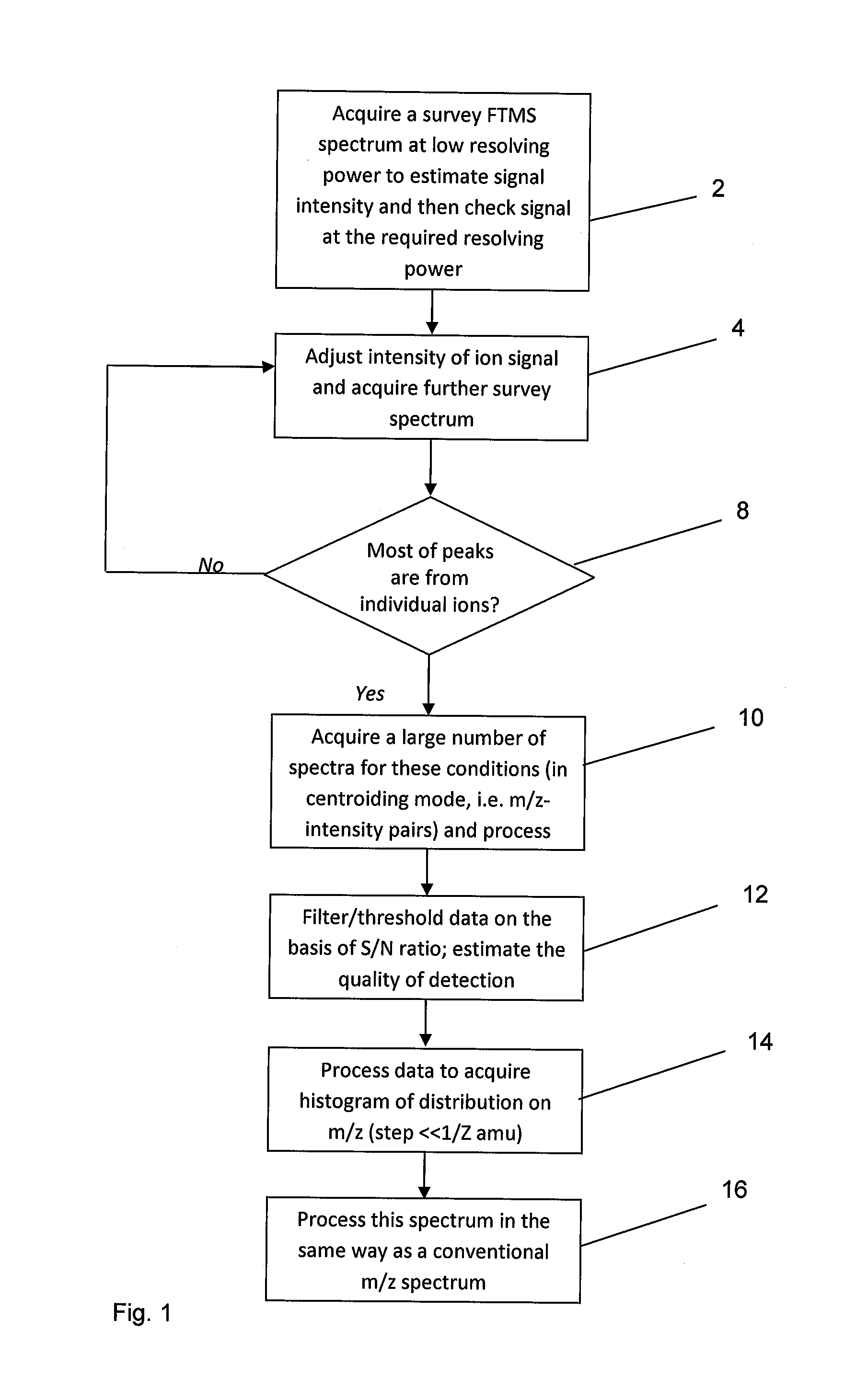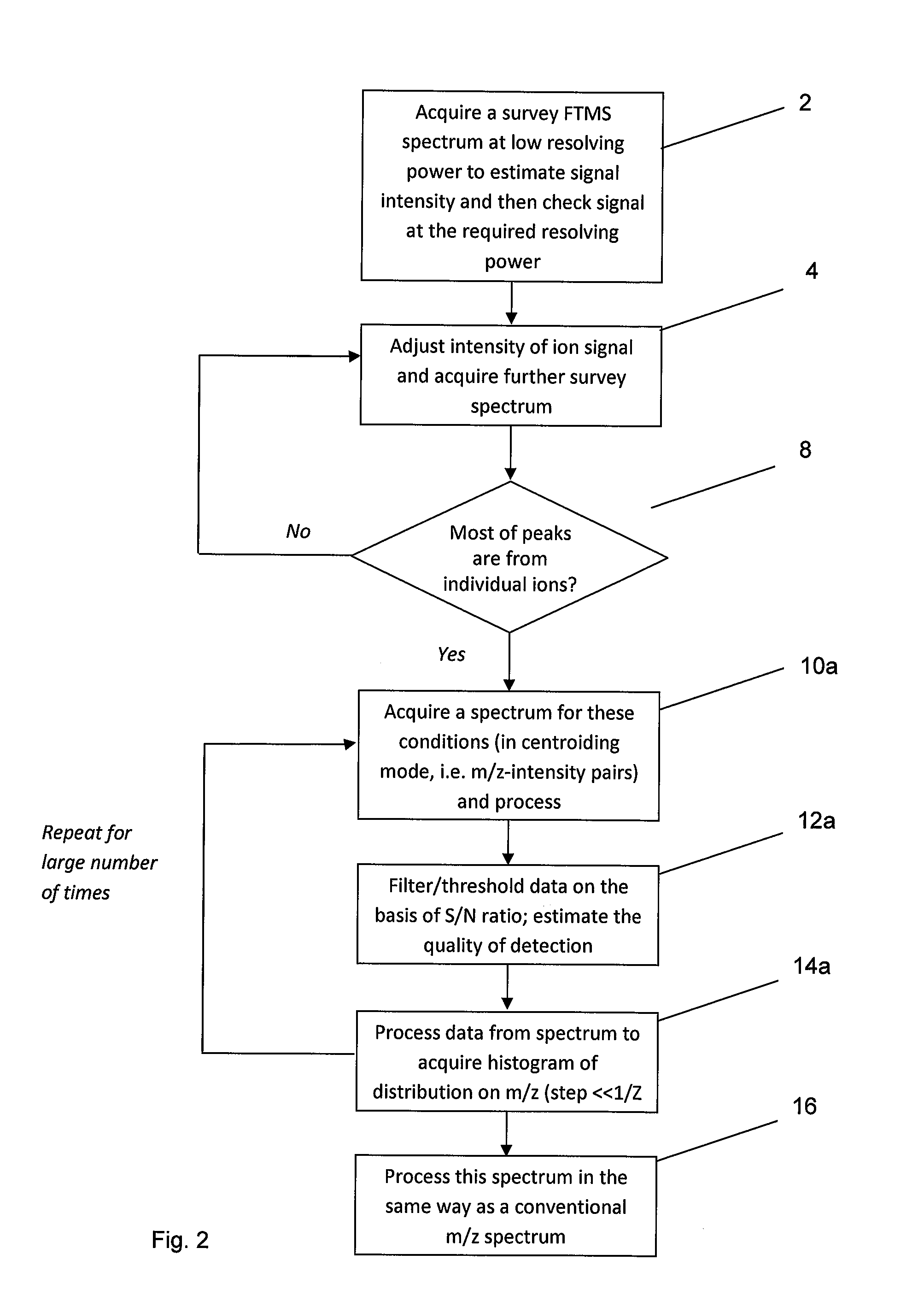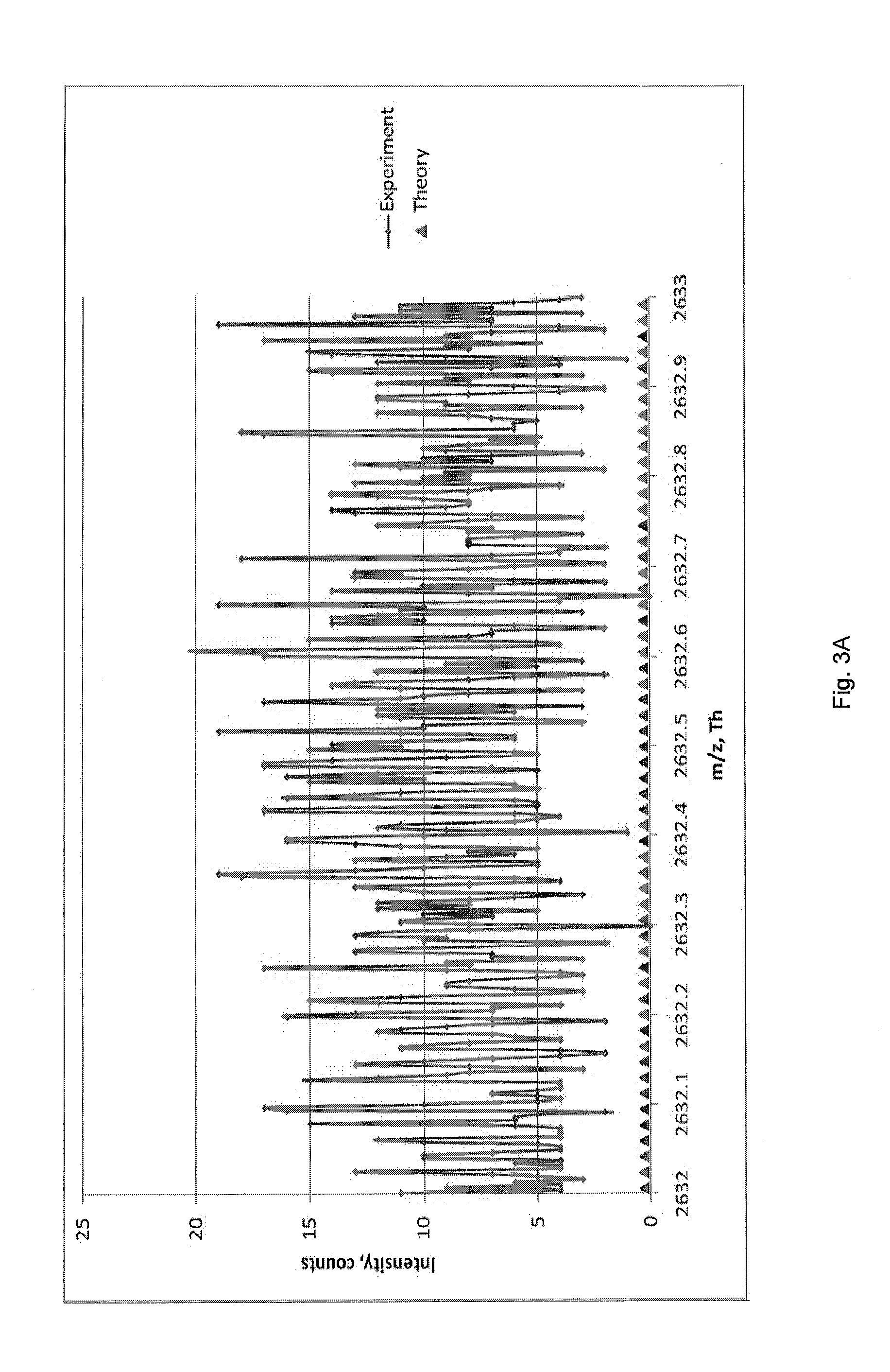Method of generating a mass spectrum having improved resolving power
a mass spectrum and resolving power technology, applied in the field of mass spectrum generation, can solve the problems of reducing the resolution of the signal, so as to improve the resolution power, and improve the resolving power
- Summary
- Abstract
- Description
- Claims
- Application Information
AI Technical Summary
Benefits of technology
Problems solved by technology
Method used
Image
Examples
Embodiment Construction
[0079]The method shown schematically in FIG. 1 comprises steps 2 to 8 which are steps for optimising the ion signal or peak intensity for carrying out the method according to the present invention. Referring to FIG. 1 in a preliminary step 2 a first mass spectrum is acquired from an FT mass spectrometer, such as an FT-ICR or Orbitrap™ spectrometer for example, using image current detection. The mass spectrum is a spectrum obtained after Fourier transformation of the transient generated from image current detection of the oscillating ions in the spectrometer. This first spectrum acts as a first survey spectrum and, for example, may possibly be acquired using normal acquisition parameters of the spectrometer, e.g. with relatively high ion load. Alternatively, if the acquisition parameters for running the method of the present invention are approximately known (e.g. from a previous experiment), it may save time to acquire the first survey spectrum with the approximately correct paramet...
PUM
 Login to View More
Login to View More Abstract
Description
Claims
Application Information
 Login to View More
Login to View More - R&D
- Intellectual Property
- Life Sciences
- Materials
- Tech Scout
- Unparalleled Data Quality
- Higher Quality Content
- 60% Fewer Hallucinations
Browse by: Latest US Patents, China's latest patents, Technical Efficacy Thesaurus, Application Domain, Technology Topic, Popular Technical Reports.
© 2025 PatSnap. All rights reserved.Legal|Privacy policy|Modern Slavery Act Transparency Statement|Sitemap|About US| Contact US: help@patsnap.com



